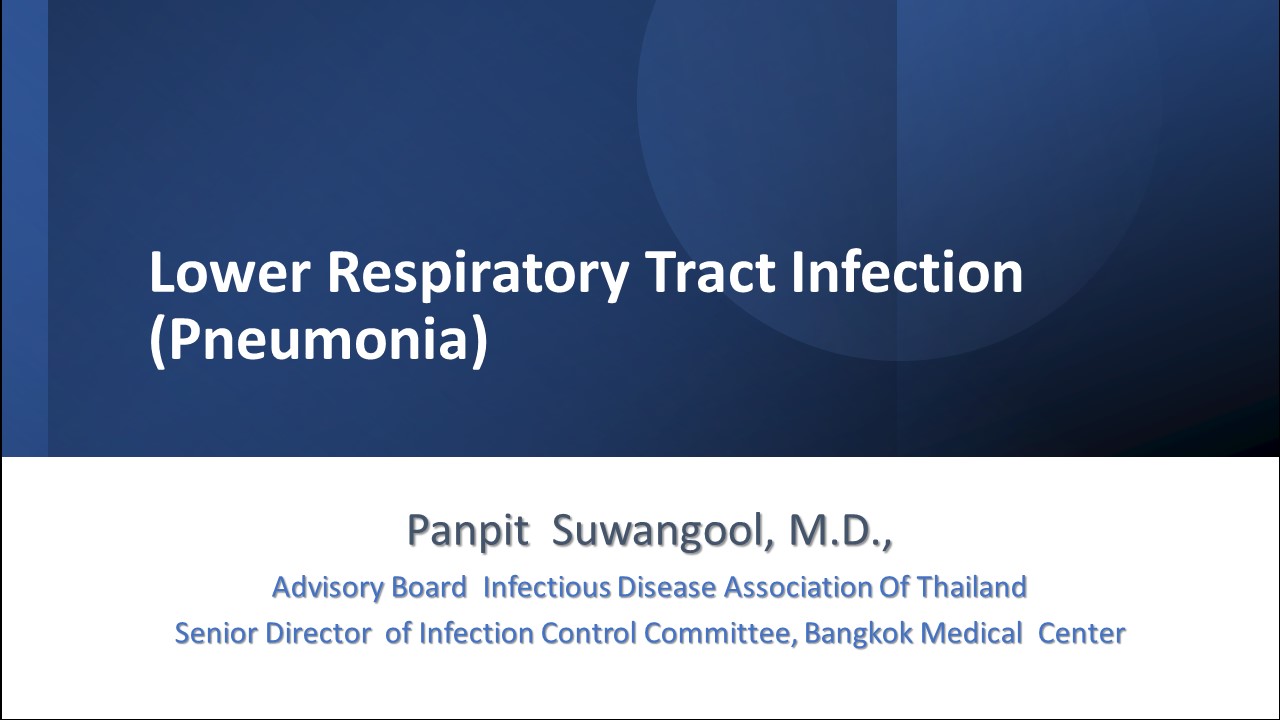Lower Respiratory Tract Infection (Pneumonia) - Chapter 5
So, in summary, there is increasing incidence of mixed pathogens in community-acquired pneumonia, increasing incidence of atypical pathogens, and increasing incidence of viral pathogens, including SARS-CoV-2 or COVID and influenza. So, we should try to diagnose CAP by doing all the diagnostic tests that are possible in our hospital setting because this is really important in choosing and monitoring the outcome of CAP. And the antimicrobial therapy should be based on the presence of comorbidities of a patient –this is very important, also, the local resistance patterns of the infecting causative agent; and lastly, the PK/PD characteristic of the agent, particularly in the treatment of pneumonia. There is some blood-lung barrier, so we have to choose a tissue-directed antibiotic, such as fluoroquinolone. And we should adopt many evidence-based guidelines in our own setting to guide and optimize the care for community-acquired patients to help us to improve outcomes of the patients.
I will end with the take-home message. The pathogen in the treatment decision regarding CAP is very, very important. Try to do some diagnostic tests to get appropriate treatment for our patients’ outcomes. And do not forget that delay in appropriate antibiotic therapy is associated with morbidity and mortality. So, we have to hit hard and hit fast. Hit hard: do not forget we start with a high dose. For beta-lactam, we start with the loading dose and then continue with the usual dose. For fluoroquinolone, we start with the recommended standard dose, which means a high dose, and not too long a duration.
Thank you for your attention.










